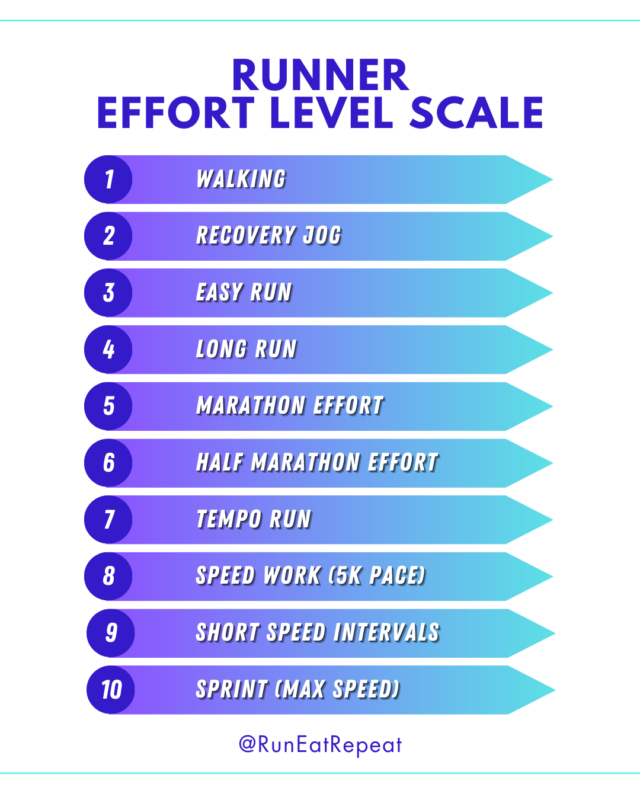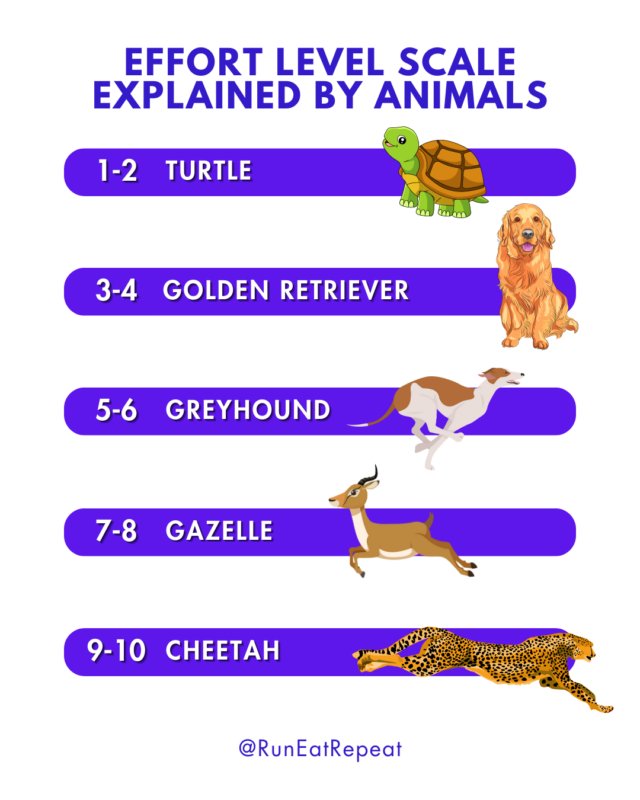The BEST Tips to Maintain an Easy Pace While Running for Optimal Performance
Whether you’re a beginner or an experienced runner, finding the right pace can significantly impact your performance and overall enjoyment. Many runners tend to push themselves too hard, leading to fatigue, injuries, or burnout. So, let’s explore seven valuable tips to help you stay at an easy pace while running. Nailing this will help you increase endurance, prevent injuries, and become a stronger runner.
- KNOW YOUR GOAL (pace for easy runs)
Before hitting the pavement, figure out your easy pace. YOUR easy pace depends on your current fitness level and current race pace (not your PR from 2 years ago or long term goals). Easy pace should be significantly slower than your race pace. A few studies have shown the optimal easy pace for building endurance is about 65% of your 5K pace. Another way to estimate it is your 10K pace PLUS 2 minutes.
Example: If your goal is a sub 4 hour marathon = 9:09 minutes/mile is race pace. And your easy pace = 10:39-11:45 minutes per mile.
Note: You don’t have to set an ideal pace if you’d prefer to run by Effort Level. But, if you’re someone who struggles to slow down & doesn’t have the discipline required to maintain an easy effort – knowing your easy pace is a good idea. By setting attainable targets, you can avoid the temptation to overexert yourself, enabling a comfortable and sustainable running pace.
- EFFORT LEVEL
Paying attention to your body’s signals is crucial in maintaining an easy pace while running. Take note of your breathing rate, heart rate, and overall comfort level during your runs. If you find yourself struggling to catch your breath or experiencing excessive fatigue, it’s a sign that you may be pushing too hard. Adjust your speed accordingly and prioritize your body’s well-being over an aggressive pace.
If you’re new to RPE (Rate of Perceived Exertion) or Effort Level Scale for Running check out this post –> RPE Scale for Runners

- TALK TEST
A simple technique to gauge your running intensity is the “talk test.” While running, you should be able to carry on a conversation without gasping for breath. If you’re unable to speak a few sentences comfortably, slow down your pace until you can. This method helps you stay within a sustainable and conversational speed range, allowing you to maintain an easy pace throughout your run.
If you don’t want your neighbors to see you running down the street talking to yourself –> RUN WITH A BUDDY. I know it can be hard to coordinate schedules, but friendships are important and this has the added benefit of helping you keep a conversational pace while running.
- USE the 80/20 RULE
The 80/20 training principle suggests that approximately 80% of your running should be done at a comfortable, EASY pace, while the remaining 20% can be dedicated to more intense workouts (HARD). By incorporating this rule into your training routine, you give your body ample time to recover and adapt, reducing the risk of overtraining and improving overall performance.
The 80/20 method to running helps you avoid the gray area. A run should either be HARD or EASY, so you don’t push yourself too much on lower intensity days. Save your legs for the truly HARD runs and leave it all out there.
Also, if you’re still skeptical about running easy – ask yourself why. You accept that you need to push your pace on tempo runs and speed work days. But, running slow on easy days is an important part of your training plan too. Respect the strategy to get the most out of your potential.
- SILENCE IS GOLDEN
Don’t listen to music, especially your favorite run fast playlist. Listen to an audiobook or podcasts on your easy run days, or leave your open ear headphones at home and listen to the sound of your feet hitting the pavement.
- RUN A CHALLENGING ROUTE
This is a great time to run that technical trail where you have to watch your footing OR find a new route where you need to watch for street signs to avoid getting lost. Let those things help slow you down. If there’s a route you avoid because it’s very hilly or difficult – consider running it on an easy day when you’re not concerned with your pace anyway.
BONUS: Easy runs can feel boring, and changing up your route is a good way to keep it interesting.
- PUSH YOURSELF ON HARD DAYS
When you’re really pushing yourself on hard days you’ll start to appreciate easy days. If you want to run fast on your easy days – you might need to work harder on your speed workouts. Tempo and interval runs are meant to be hard and push you to your upper limits. When you’re truly showing up for hard days – you need the easy days.
So, if you’re running too fast on easy days… you might need to get honest with yourself about how hard you’re working on the other days.
Finding and maintaining an easy pace while running is key to maximizing your performance, enjoyment, and long-term sustainability. By setting realistic goals, listening to your body, employing the “talk test,” using the 80/20 rule, practicing deep breathing, embracing interval training, and prioritizing rest and recovery, you can achieve optimal results in your running journey.
Remember, consistency is key, and a comfortable pace will help you go the distance and enjoy the journey towards becoming a stronger, healthier runner. Lace up your shoes, find your rhythm, and embrace the joy.
You got this.

References: G.A.Dudley, W. M.Abraham & R.L.Terjung, 1982. Influence of exercise intensity and duration on biochemical adaptations in skeletal muscle.
John O. Holloszy, 1967 Effects of Exercise on Mitochondrial Oxygen Uptake and Respiratory Enzyme Activity in Skeletal Muscle.

Keep Going with these:
-
EFFORT SCALE for RUNNERS
-
Running Pace Calculator
-
Secrets to getting Motivated to Run
-
Things I’d Never Do After Running 32 Marathons

Leave a Reply